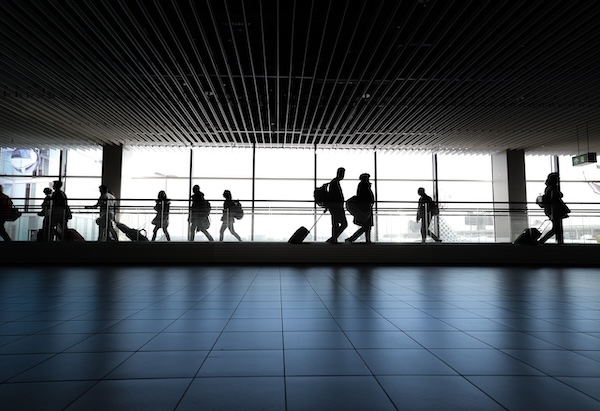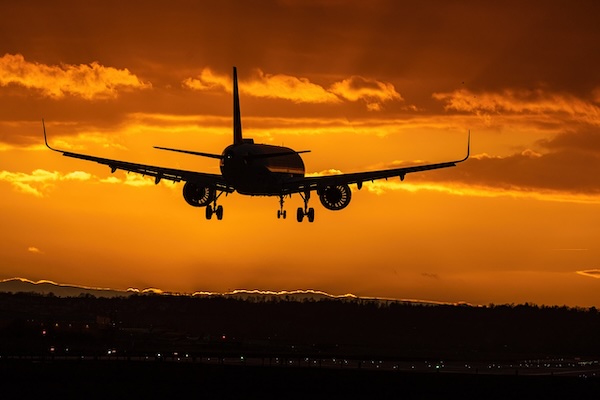India visa on arrival: eligibility and process explained
Posted by Natvisa Content Team | Updated on Jan 21, 2025
India visa on arrival is a visa issued to eligible travelers upon arrival at a designated port of entry. At the same time, a Tourist Visa on Arrival (TVOA) was a specific type of visa on arrival granted to citizens of select countries for tourism purposes only. India e-visa is now available to citizens eligible for TVOA.
Known as the land of diversity, India has been a favorite travel destination among international tourists. Citizens of foreign countries need proper authorization to visit India. Visitors from a few neighboring countries are exempt from this rule. They can travel to India with their identity document and their passports.
Citizens of a few foreign countries are also eligible for a visa on arrival in India, while others can apply for an India e visa. Read on to learn more about visas on arrival in India.

What is a visa on arrival (VOA)?
An Indian visa on arrival is an immigration authorization issued to foreign nationals at the port of entry in their destination country. This is a standard visa issued by the officials at the immigration wing of an airport or a seaport. Please note that:
- VOA is not a visa-free entry.
- The validity period of such visas tends to be short-term. (non-extendable and non-convertible)
Indian regular visa/e-visa versus India visa-on-arrival
The main difference between a regular visa/e-visa and an Indian visa on arrival is that travelers must apply for a regular/e visa before the trip. You can get a visa on arrival at the port of entry. Besides, regular/eVisa must be approved before you can plan your trip.
An Indian visa on arrival saves you from that hassle. For a VOA, you do not need to apply formally (no paperwork or interview).
Is a visa for arrival (VOA) available for India
India grants visas to citizens of a few foreign countries on arrival at certain Indian airports. Travelers from Japan, South Korea, and the United Arab Emirates can get an India visa on arrival, but they must meet a few conditions.
Eligibility Restrictions
- Travelers with parents/grandparents of Pakistani origin are not eligible for the facility.
Requirements for UAE Citizens
- UAE citizens must have previously visited India on an eVisa or regular visa to be eligible.
- Those from the UAE visiting India for the first time should apply for an Indian evisa or regular visa.
Requirements for Japanese Citizens
If you're a Japanese national unable to apply for a regular visa or e-visa on the portal, the Visa-on-Arrival is for you. However, if you apply at an Indian Mission and meet the requirements, you should be granted a visa.
Visa on arrival in India: key points
You need to be aware of the following key points if you belong to an India Visa-on-Arrival eligible nation:
Exceptions
Diplomats and official passport holders cannot avail of the VOA.
Eligible airports
The six airports, Hyderabad, Bangalore, Kolkata, Mumbai, Delhi, and Chennai offer visas on arrival.
VOA duration & purpose
- The VOA is valid for 60 days.
- It's issued for specific purposes: tourism, attending conferences, as a business visa, etc.
Additional requirements
- You must not possess a residence or job in India.
- You must provide proof of sufficient funds for your stay.
Validity & duration
- It has a 60-day validity; the duration of the allowed stay in India is determined by immigration staff upon arrival.
Indian tourist visa on arrival
The Indian government granted a Tourist Visa on Arrival (TVOA) to citizens of Cambodia, Finland, New Zealand, Japan, Singapore, Cambodia, Laos, Luxembourg, Vietnam, Philippines, and Indonesia.
Currently, all visitors eligible for a TVOA can apply for an India e-visa instead. Please note that United States citizens are not eligible for an India Visa on Arrival but can apply for an Indian e visa.
What is the process for getting an India VOA?
International travelers eligible for an Indian VOA must complete a visa application form. The form can be downloaded from the official website of the Indian government. It is also available with eligible airlines; travelers could fill it out during their flights.
If you are traveling to India, you must download, print, and submit the form with ID documents at India's visa-on-arrival counters. You will also pay the fee to receive a visa with a set expiry date.

Documents required for VOA
If eligible, you can apply for an Indian visa on arrival by submitting the following documents at the visa counter:
- Legally valid passport with six months validity and two blank pages
- Passport size photo (two of them)
- A copy of the passport
- Return tickets
- Proof of funds
What If I’m not eligible for the India VOA?
India offers a visa on arrival at select airports for citizens of a select few countries. The government of India also provides a range of e-visas (online business and medical visas) and regular visas.
Travelers can apply for India e-visa for 30 days, 1 year, or 5 years. Indian eVisa holders can bypass lengthy visa-on-arrival lines, while others can seek regular visas at Indian embassies or consulates.
Conclusion
To summarize, citizens of certain neighboring countries and a few foreign countries are eligible for a Visa on Arrival in India. Only travelers from Japan, South Korea, and the UAE are eligible for the VOA at certain airports in India.
The Indian government used to provide a TVOA to citizens of certain countries. However, now they can apply for an India e visa instead. You can apply for an India e visa or VOA (if applicable) depending on your preferences and eligibility.
 This content has been reviewed
This content has been reviewed
The content on this page has undergone a thorough review by a Natvisa expert, ensuring its accuracy, relevance, and quality. Its important to always check with relevant authorities as entry policies can change.